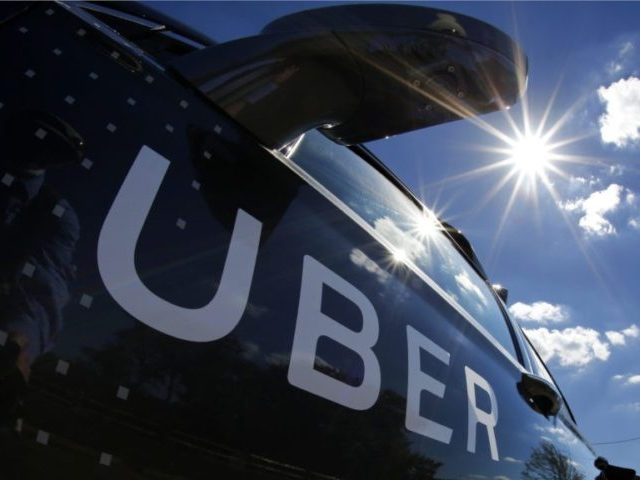Bloomberg recently published an investigation into former Uber CEO Travis Kalanick, providing insight into the issues that the company has faced in the past year.
The investigation published by Bloomberg begins by discussing the company’s lack of confidence in former CEO Travis Kalanick and the office culture issues that plagued the company:
A year ago, before the investor lawsuits and the federal investigations, before the mass resignations, and before the connotation of the word “Uber” shifted from “world’s most valuable startup” to “world’s most dysfunctional,” Uber’s executives sat around a hotel conference room table in San Francisco, trying to convince their chief executive officer, Travis Kalanick, that the company had a major problem: him.
The executives were armed that day with something unusual for Uber Technologies Inc.: the results of a survey. Kalanick operated by gut feeling and with a stubborn sense of how people should feel, not how they did. Jeff Jones, Uber’s new president and former chief marketing officer for Target Corp., wanted more substantial insights. Conclusions drawn from the survey were printed and hanging on the walls. About half the respondents had a positive impression of Uber and its convenient ride-hailing app. But if respondents knew anything about Kalanick, an inveterate flouter of both workplace conventions and local transportation laws, they had a decidedly negative view.
It was shortly after this meeting that an Uber executive was informed of the famous video of Kalanick verbally berating an Uber driver that later went viral:
Then a top executive excused herself to answer a phone call. A minute later, she reappeared and asked Kalanick to step into the hallway. Another executive joined them. They hunched over a laptop to watch a video that had just been posted online by Bloomberg News: grainy, black-and-white dashcam footage of Kalanick in the back seat of an UberBlack on Super Bowl weekend, heatedly arguing over fares with a driver named Fawzi Kamel.
“Some people don’t like to take responsibility for their own shit!” Kalanick can be heard yelling at Kamel. “They blame everything in their life on somebody else!”
As the clip ended, the three stood in stunned silence. Kalanick seemed to understand that his behavior required some form of contrition. According to a person who was there, he literally got down on his hands and knees and began squirming on the floor. “This is bad,” he muttered. “I’m terrible.”
According to Bloomberg, President Trump was the beginning of many problems for Uber and Kalanick:
The melodrama began, in a sense, with Donald Trump. On Jan. 27 the newly inaugurated president issued his executive order imposing border restrictions on people from seven Muslim countries. Outrage erupted. People took to the streets; tech workers in Silicon Valley walked out of their offices in symbolic protest. And in New York, a small union called the New York Taxi Workers Alliance declared that there would be no taxi pickups from 6 p.m. to 7 p.m. on Saturday night at John F. Kennedy International Airport.
For Uber, that would create extra demand at the airport, which meant it could charge more—but this would probably cause a backlash. That had happened before when the company let its “surge pricing” algorithms do their thing. So the New York managers decided to be good citizens and suspend surge pricing for the night.
The backlash hit anyway. After years of negative revelations—spying on passengers, dubious driverless-car experiments in San Francisco, the CEO’s bragging about sexual conquests, to name just a few—the public was already inclined to believe the worst of Uber. If the company wasn’t price gouging this time, maybe it was trying to break up the JFK strike. A new hashtag was trending on Twitter: #deleteuber.
By the end of the year, Kalanick was on his way out at the company:
Although he no longer came into the office, Kalanick managed to keep himself in the middle of the company’s affairs. He lobbied for his own pick as successor, former General Electric Co. chief Jeffrey Immelt. The Uber directors would have none of that— they suspected that Kalanick had secured an agreement from Immelt to serve for only two years, paving the way for his Jobs-like return. Kalanick also flew to Seattle to interview a wild-card candidate referred by investor TPG: Expedia Inc. CEO Dara Khosrowshahi, who later marveled to friends that it certainly felt like Kalanick was still in charge.
Indeed, Kalanick had some tepid support inside the company. But his vote counting rankled even his defenders. He was also calling executives daily, asking for detailed information about the business. Even worse, he ordered the security team to dig through an employee’s email to see if that person was leaking a potentially damaging story. It all proved too much for the 16-person executive team, which signed a letter to Uber’s board—but clearly directed at Kalanick—asking them to refrain from reaching out to employees or meddling in the company’s daily affairs. Kalanick’s own handpicked executives turned against him.
Read the full investigation by Bloomberg here.
Lucas Nolan is a reporter for Breitbart News covering issues of free speech and online censorship. Follow him on Twitter @LucasNolan_ or email him at lnolan@breitbart.com.

COMMENTS
Please let us know if you're having issues with commenting.